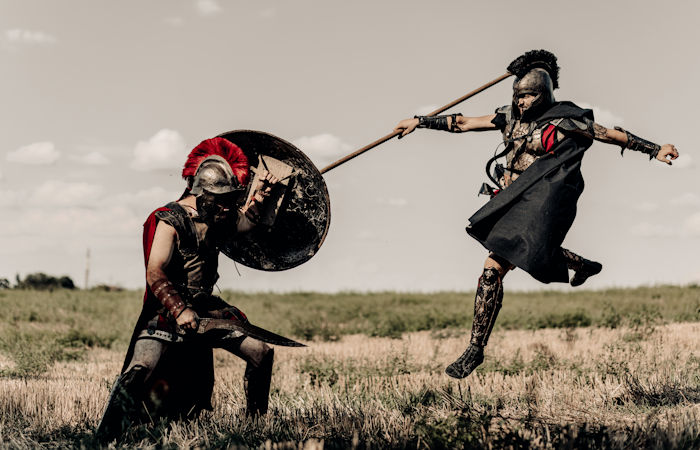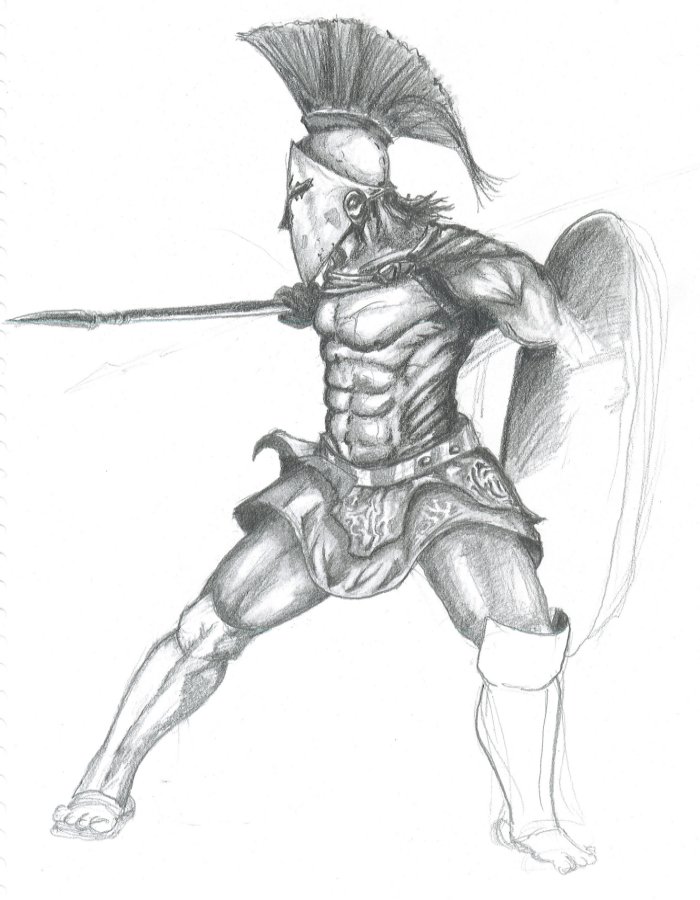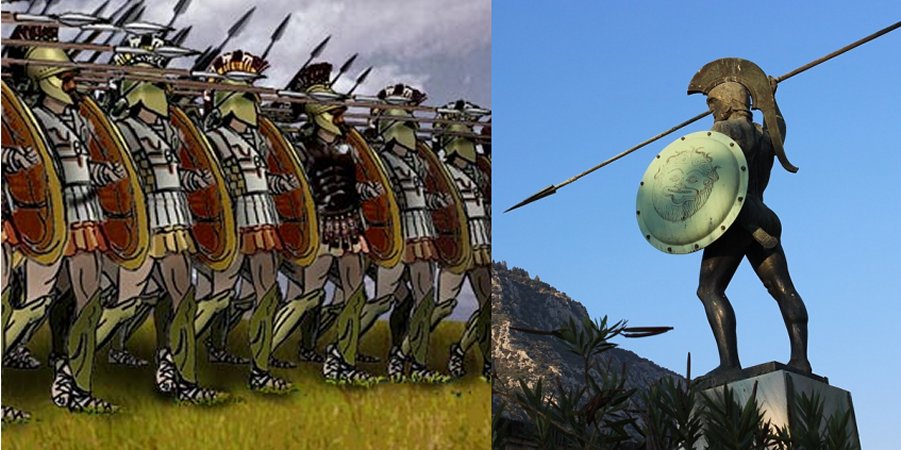Why Was The Spartan Army So Successful?
Conny Waters - AncientPages.com - Sparta was famous for being a city-state that valued discipline. The state’s citizens were expected to be loyal and contribute to Sparta’s prosperity. Located in a valley on the banks of the Eurotas River in the southeastern portion of Greece, it was surrounded by several enemies.
Credit: Adobe Stock - Stanislav
Foreigners were allowed to live in Sparta, but they had no rights as citizens and could be expelled anytime for any reason.
It’s also no coincidence that Spartan warriors were exceptionally skilled, and the army was victorious. Military training and education were mandatory for young boys.
What Was Daily Life For Spartan Warriors?
Ancient records reveal warriors of Sparta had to follow strict rules. Young men trained to become warriors had limited rights to move around freely.
From the age of 7, when military training started, boys and men had to live in confined military barracks until they were 30 years. Leaving those houses was not permitted, not even when the men married. There was not much room for private life.
An image drawn in pencil of a Spartan Warrior. Image credit: SAWg3rd - CC0 1.0
These restrictions occasionally led to those men sneaking out late in the evening to meet their wives.
In Sparta, only the strongest survived. As previously mentioned in Ancient Pages, “one of the harshest facts to come out about this way of living was that the older citizens of Sparta would kill those boys who could not be trained due to a disability.
The boys were thrown into a pit by the elders, who judged the physical ability of each boy in question. Not all were condemned to death, just the weakest ones.”
Spartan warriors were somewhat vain. They often wore long hair and styled it before a battle. The goal was to look as fearsome as possible, but an attractive physical appearance was never wrong. A real warrior never wore any clothes except for the red cape.
Also, a Spartan warrior could not expect to enjoy too much delicious food. Nothing was more ridiculous than a fat warrior. Spartan warriors were expected to be athletic and fit.
Left: The Spartan army was an infantry-based army that fought using the phalanx formation. Credit: Public Domain - Right: Statue of King Leonidas. Credit: Public Domain
The worst sin a Spartan warrior could commit was capitulation. When raising their sons, mothers always told them they should return as soldiers or dead in a battle. The die-or-win mentality was typical among warriors of the ancient world. Viking warriors’ highest goal was to die courage in battle. Only such honorable death could guarantee a Viking entrance to Valhalla, where the great Norse God Odin resided.
The Spartan King Leonidas received superior military training, which prepared him unknowingly for future events. He may not have succeeded in winning an impossible war, but he and his 1,000 men died heroically defending the land that they loved.
It cannot be denied that Spartan warriors were skilled, effective, and courageous, but all their accomplishments were achieved through hard military training that started at a young age.
Written by Conny Waters – AncientPages.com Staff Writer
Updated on October 30, 2022
Copyright © AncientPages.com All rights reserved. This material may not be published, broadcast, rewritten or redistributed in whole or part without the express written permission of AncientPages.com
Expand for referencesMore From Ancient Pages
-
 Declining Fertility Rates May Explain Neanderthal Extinction
Archaeology | Jun 3, 2019
Declining Fertility Rates May Explain Neanderthal Extinction
Archaeology | Jun 3, 2019 -
 12 Ancient Egyptian Symbols Explained
Ancient Symbols | May 9, 2017
12 Ancient Egyptian Symbols Explained
Ancient Symbols | May 9, 2017 -
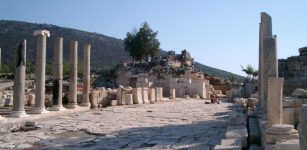 Reconstruction Of Five-Story Patara Lighthouse Built By Roman Emperor Nero – Begins
Archaeology | May 30, 2019
Reconstruction Of Five-Story Patara Lighthouse Built By Roman Emperor Nero – Begins
Archaeology | May 30, 2019 -
 Surprising Discovery In Valsgärde Viking Boat Graves – Scandinavian’s Oldest Down Bedding Found
Archaeology | Mar 27, 2021
Surprising Discovery In Valsgärde Viking Boat Graves – Scandinavian’s Oldest Down Bedding Found
Archaeology | Mar 27, 2021 -
 Height Differences Among Neolithic People Was Caused By Environmental Stress Not Genetics
DNA | Dec 13, 2023
Height Differences Among Neolithic People Was Caused By Environmental Stress Not Genetics
DNA | Dec 13, 2023 -
 Legendary Beowulf Fighting Dragon Grendel In Heroic Poem Written In Anglo-Saxon England
Featured Stories | Aug 14, 2022
Legendary Beowulf Fighting Dragon Grendel In Heroic Poem Written In Anglo-Saxon England
Featured Stories | Aug 14, 2022 -
 Ancient Artifacts Used In Magical Rituals To Ward Off The Evil Eye Found Next To The Pilgrimage Road
Archaeology | Sep 11, 2023
Ancient Artifacts Used In Magical Rituals To Ward Off The Evil Eye Found Next To The Pilgrimage Road
Archaeology | Sep 11, 2023 -
 Did Ancient Romans And Greeks Love As We Do? Perhaps Even More Hopelessly
Featured Stories | Jul 30, 2024
Did Ancient Romans And Greeks Love As We Do? Perhaps Even More Hopelessly
Featured Stories | Jul 30, 2024 -
 Chagyrskaya Female Neandertal That Lived 60,000-80,000 Years Ago – Studied
Archaeology | Jun 23, 2020
Chagyrskaya Female Neandertal That Lived 60,000-80,000 Years Ago – Studied
Archaeology | Jun 23, 2020 -
 Unclear Purpose Of Mysterious Rock-Cut City Of Petra – Was It A Fortress Or Sacred City?
Featured Stories | May 30, 2020
Unclear Purpose Of Mysterious Rock-Cut City Of Petra – Was It A Fortress Or Sacred City?
Featured Stories | May 30, 2020 -
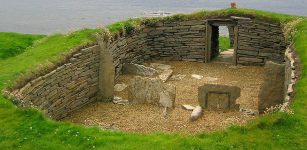 The Knap Of Howar: One Of The Oldest And Well-Preserved Neolithic Complexes Orkney, Scotland
Featured Stories | Mar 2, 2017
The Knap Of Howar: One Of The Oldest And Well-Preserved Neolithic Complexes Orkney, Scotland
Featured Stories | Mar 2, 2017 -
 Historic Shipwreck Mentor Reveals Its Underwater Secrets
Archaeology | May 14, 2022
Historic Shipwreck Mentor Reveals Its Underwater Secrets
Archaeology | May 14, 2022 -
 Vikings’ Long Distance Trade Reached The Arctic – Deer Antler Combs Reveal
Archaeology | Sep 19, 2023
Vikings’ Long Distance Trade Reached The Arctic – Deer Antler Combs Reveal
Archaeology | Sep 19, 2023 -
 Ancient Traditional Practices Can Help Europeans Adapt To Climate Change
Archaeology | Aug 31, 2022
Ancient Traditional Practices Can Help Europeans Adapt To Climate Change
Archaeology | Aug 31, 2022 -
 Secrets Of A Lake That Could Re-Write Ancient History Of America – Interesting Artifacts And Buildings – Part 2
Ancient Mysteries | Jun 5, 2018
Secrets Of A Lake That Could Re-Write Ancient History Of America – Interesting Artifacts And Buildings – Part 2
Ancient Mysteries | Jun 5, 2018 -
 Inscribed Fragments Of Stone Slabs Unearthed In Matariya, Ancient Heliopolis
Archaeology | Nov 9, 2018
Inscribed Fragments Of Stone Slabs Unearthed In Matariya, Ancient Heliopolis
Archaeology | Nov 9, 2018 -
 What Was Legio Martia And Why Were The Roman Soldiers Called The Martians?
Ancient History Facts | Jan 5, 2018
What Was Legio Martia And Why Were The Roman Soldiers Called The Martians?
Ancient History Facts | Jan 5, 2018 -
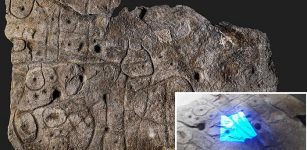 Large Bronze Age Stone May Be Europe’s Oldest 3D Map
Archaeology | Apr 8, 2021
Large Bronze Age Stone May Be Europe’s Oldest 3D Map
Archaeology | Apr 8, 2021 -
 Peaches Spread Across North America Through The Resourceful Networks Of Indigenous Communities
Archaeology | Nov 25, 2024
Peaches Spread Across North America Through The Resourceful Networks Of Indigenous Communities
Archaeology | Nov 25, 2024 -
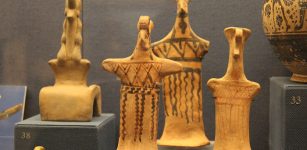 Mycenaean Culture Used Lignite For Their Kilns 3,000 Years Ago – Surprising Discovery Reveals
Archaeology | Jan 25, 2022
Mycenaean Culture Used Lignite For Their Kilns 3,000 Years Ago – Surprising Discovery Reveals
Archaeology | Jan 25, 2022

